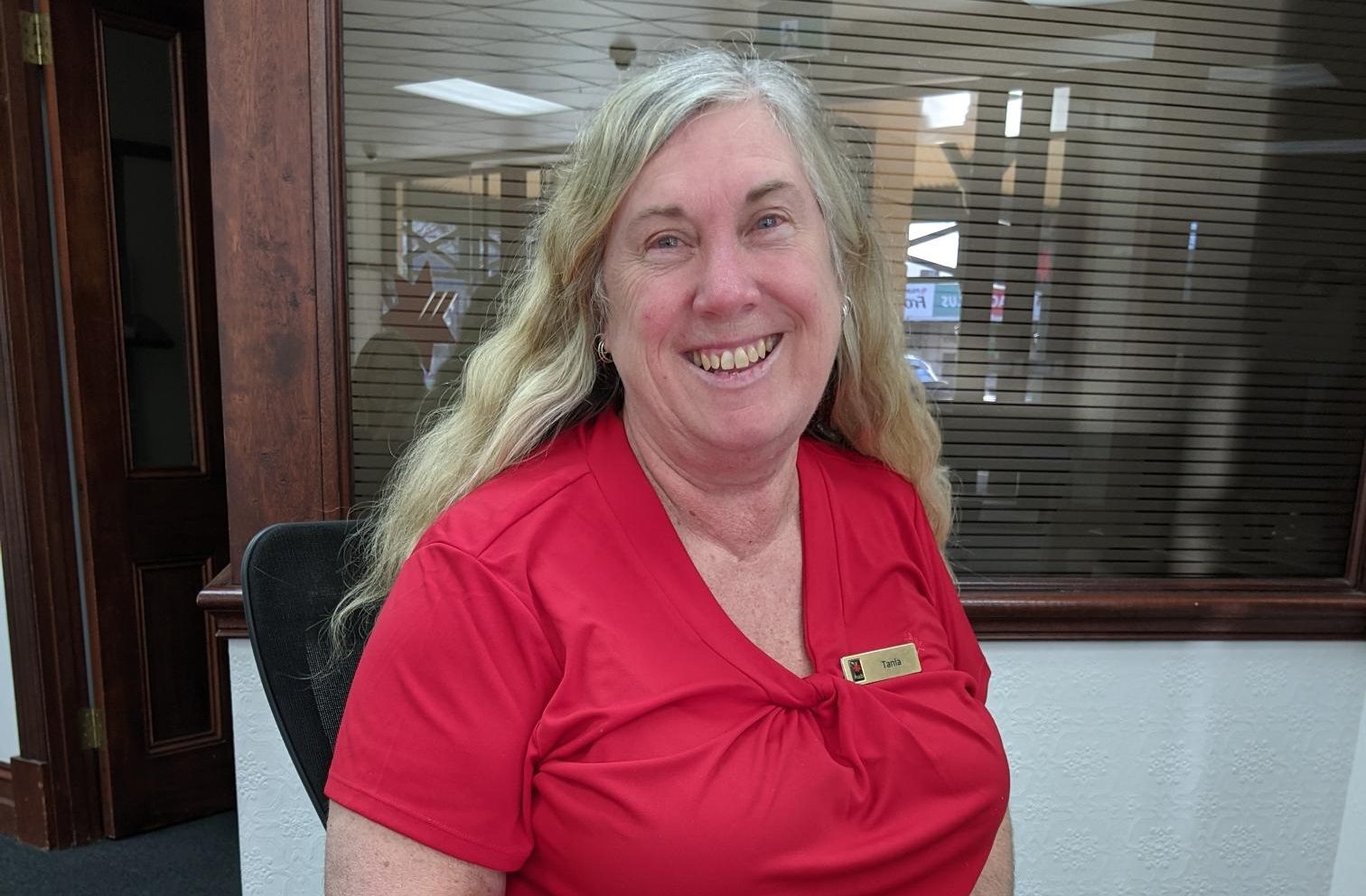When an elderly customer walked into a branch in the Barossa Valley shaking, with the words ‘fast payment’ written on a piece of paper, NAB Gawlor customer advisor Tania Oxenham knew something wasn’t right.
“I had a gut feeling about it. It just felt bad.”
The customer Elizabeth* demanded Tania urgently transfer nearly $10,000 into an account, claiming it was for her niece who was doing a renovation.
“She brought in a notepad that had an account number on it and the words ‘fast payment’. Those words were a red flag,” Tania said.
“I asked her what she wanted to do, and she just pointed at the ‘fast payment’. I looked at her hands, and they were shaking.”
Tania spent time talking to Elizabeth, trying to establish why there was such urgency to transfer the money.
“I tried to slow things down and get more information about this transaction,” Tania said.
“I checked if she had a copy of her niece’s renovation quotes and she said no. I advised Elizabeth to ring her niece so we could check the account details were correct before we did the transfer. But she told me she had left her phone at home and didn’t know her number off the top of her head.
“She became emotional the more questions I asked to get to the bottom of what was going on.
“Something just seemed off.”
After Tania pointed out the red flags, Elizabeth agreed not to transfer the money out of her account, and instead made a smaller withdrawal.
With her savings still largely intact, the customer left with Tania cautioning her to stop and think twice about who she was sending the money to.
Protecting customers
A week later, Elizabeth returned with her money in an envelope, and asked Tania to deposit it back into her bank account.
“She seemed shaken when she visited the branch again. She told me she was thankful I had prevented the transaction, as she realised it was as scam.”
Cunning criminals had tried to isolate Elizabeth from her family and spun an elaborate lie that the bank was trying to steal her money.
“She explained she had received a phone call from a man a few days earlier. He had convinced her that the branch staff were trying to steal her money and that she needed to quickly deposit her savings into another account at a different bank,” Tania said.
“The scammer even told her not to discuss it with her son and continued to call her relentlessly after that visit to the branch.
“Elizabeth felt something wasn’t right after she spoke to us and didn’t pick up the subsequent calls. She realised we weren’t trying to steal her money and were actually protecting her from transferring it to criminals.”
Tania asked Elizabeth to pass on the details of the bank account controlled by the criminal, so NAB’s fraud team could investigate further.
Scam red flags
NAB Executive, Group Investigations Chris Sheehan said the organised criminals behind the scam epidemic were experts at social engineering and creating a sense of pressure and urgency.
“Elizabeth’s story is an example of the common red flags we urge Aussies to recognise to protect themselves and their loved ones,” Mr Sheehan, a former Australian Federal Police executive, said.
“Scam attempts on our customers are increasing. That’s why colleagues across the bank are working every day to protect our customers and reduce the impact of this crime.
“Frontline colleagues like Tania are trained to ask questions – and it works. Then we have specialists at Fraud Operations investigating losses and trying to recover money for customers, and digital and technology teams leading projects and initiatives to prevent and detect scams before they start.”
What should customers do if they receive a scam call?
- Treat any unsolicited phone calls with caution. If you’re unsure about the legitimacy of a call, hang up and call back on an official phone number. The general NAB number 13 22 65 – you’ll find it on the back of your card and our website.
- Never provide personal or banking information during an unsolicited call.
- Ensure you carefully read any SMS codes you receive. If the message says “Don’t share this code with anyone, including NAB. Your security code is XXXX for a funds transfer”, then do not share this code with anyone.
- Never give an unsolicited caller remote access to your computer or online bank accounts.
- More info: How to spot scam phone calls
NAB offers free online security webinars for personal and business customers, as well as the community. The one-hour session covers the latest scams and cyber security trends and advice about how to protect yourself. Visit nab.com.au/security for more information.
NAB’s action tackling scams and fraud
NAB has a comprehensive bank-wide strategy in place to reduce the impact of scams and fraud, including:
- Stopping the use of links in unexpected text messages to customers
- Introducing payments prompts to digital banking to encourage customers to pause before they pay.
- Collaborating with telecommunications providers to prevent spoofing scams.
- Using BioCatch technology in digital channels to help identify fraudulent activity.
- Placing blocks on some high-risk crypto currency platforms.
- Free monthly webinars that all Australians can attend.
- Free and discounted anti-virus software offers for customers.
*Customer name changed for privacy reasons




